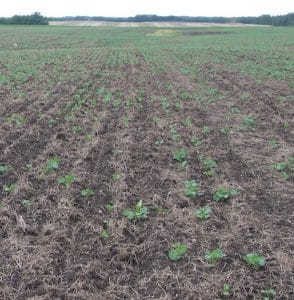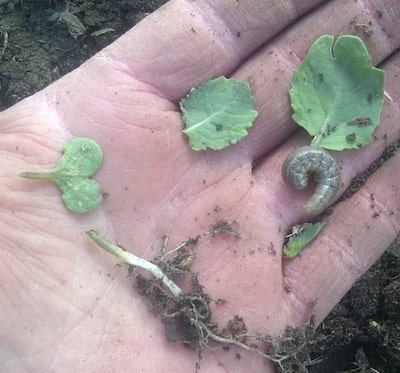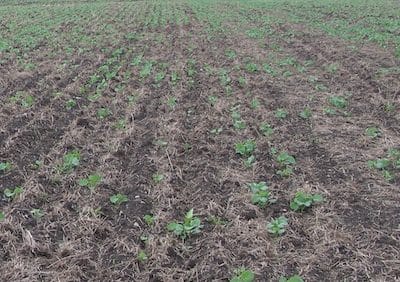

Cutworm scouting begins with a walk through the field looking for bare patches, chewing damage in foliage, or clipped plants. Cutworms and cutworm damage is one thing to look for while scouting this week.
If you find patches of missing or damaged plants, dig around healthy plants next to the missing or damaged plants. Cutworms have likely moved on to these nearby healthy plants. Cutworms to move underground during the day or feed only at the soil surface, so day-time scouting requires digging. In moist soils, cutworms will stay close to the surface. In dry soils, they may go down 8-10 cm (3-4”).
To scout, dig a one square foot area to a depth of 10 cm (4″) and put the soil into a basin. Loosen the soil and shake it up to activate cutworms. Also look for frass (cutworm excrement) around roots. Repeat a few times throughout the field.
Try to identify the cutworm species. Knowing the species can be helpful in fine-tuning the control measures. Also look for orange pupae. Cutworms are not feeding at the pupal (cocoon) stage and are no longer a threat to this year’s crop.
Alberta is asking growers and agronomists who spot cutworms to report with sighting and species to its online survey. Here is the submission form. Survey results are mapped here.
When scouting for cutworms, think back to last year. Fields that had flowering plants (crops or weed patches) in August or September of the previous year may have higher cutworm counts. These flowers attract some species of adult cutworm moths, which lay their eggs in these areas. This explains why cutworm damage will often appear in patches.
Click here for more on cutworm species and identification, thresholds and control options. This link also includes wireworm identification tips.

